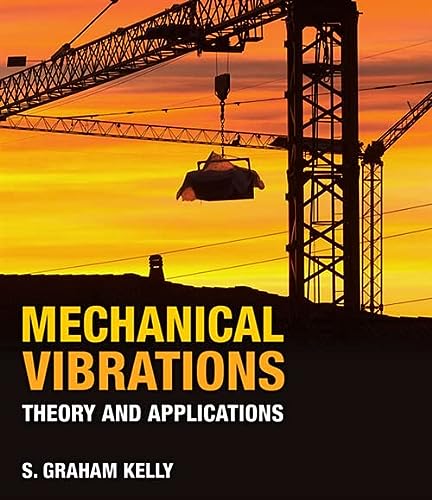The differential equations governing a three degree-of-freedom system are [ left[begin{array}{lll} 2 & 0 & 0
Question:
The differential equations governing a three degree-of-freedom system are
\[ \left[\begin{array}{lll} 2 & 0 & 0 \\ 0 & 2 & 0 \\ 0 & 0 & 3 \end{array}\right]\left[\begin{array}{l} \ddot{x}_{1} \\ \ddot{x}_{2} \\ \ddot{x}_{3} \end{array}\right]\left[\begin{array}{lll} 1 & 0 & 0 \\ 0 & 0 & 0 \\ 0 & 0 & 2 \end{array}\right]\left[\begin{array}{c} \dot{x}_{1} \\ \dot{x}_{2} \\ \dot{x}_{3} \end{array}\right]+\left[\begin{array}{ccc} 5 & -3 & 0 \\ -3 & 7 & -4 \\ 0 & -4 & 4 \end{array}\right]\left[\begin{array}{c} \dot{x}_{1} \\ \dot{x}_{2} \\ \dot{x}_{3} \end{array}\right]=\left[\begin{array}{c} 0 \\ 0 \\ 0.1 \sin 60 t \end{array}\right] \]
What is the impedance matrix for this system?
Spectral analysis shows that the natural frequencies for a fifthorder system are \(20 \mathrm{rad} / \mathrm{s}, 41 \mathrm{rad} / \mathrm{s}, 55 \mathrm{rad} / \mathrm{s}, 93 \mathrm{rad} / \mathrm{s}\), and \(114 \mathrm{rad} / \mathrm{s}\). Experimental modal analysis is used to determine that its modal matrix is \[ \mathbf{P}=\left[\begin{array}{rcrrr} 1.3 & 1.0 & 0.7 & 0.5 & 0.1 \\ 1.8 & 1.5 & 1.0 & 0.4 & -0.3 \\ 2.4 & 0.5 & -0.4 & -0.3 & 0.2 \\ 2.9 & -0.2 & -0.7 & 0.5 & -0.5 \\ 2.0 & -0.15 & 0.2 & -0.6 & 0.4 \end{array}\right] \]
Step by Step Answer:






